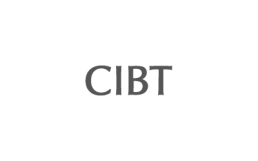Unleashing Innovation in Public Service Delivery
Our powerful expertise and team create end-to-end solutions to ensure societal pace of change remains compatible with the culture. Commerce at the state and local levels involves the economic activities, regulations, and policies that drive the economic engine of regions within the United States. It encompasses the operations of businesses, the implementation of trade policies, and the fostering of economic development. The Commerce Department collects, stores, and analyzes a wealth of information, including data on the Nation’s economy, population, and environment. This data goes to the core of the Department’s mission.

Upgrading to cloud-based solutions is essential for state and local commerce agencies to enhance efficiency, real-time data processing, and service delivery.
Challenges
Ascertaining the balance between user expectations, engagement and technological delivery coupled with adapting to evolving regulations and burdens are hallmarks of State and Local commerce.
Legacy Systems and Outdated Technology
Many state and local commerce agencies rely on outdated technology, resulting in inefficiencies and security risks. Transitioning to modern IT systems can be challenging without adequate support.
Digital Service Delivery
Increasing demand for online services requires significant IT investment, which many agencies struggle to secure. User-friendly digital platforms are essential for meeting citizen and business expectations.

Digital Citizen Experience
Websites and applications hinder customer satisfaction and competitiveness in the market. Agencies must enhance their digital presence to retain users.
Cybersecurity Risks
With sensitive data at stake, agencies face significant cyber threats but often lack the resources for robust security measures, jeopardizing public trust.
Growth is often met with resistance in the form of hurdles from cultural to financial, and organizational barriers.
Organizational Barriers
Resistance to Change: Comfort with legacy systems and fears about job security hinder IT adoption. Effective change management and training are essential.
Financial Barriers
Limited IT Budgets: Tight budgets restrict modernization efforts, leading to outdated systems.
Technological Barriers
IT Talent Shortage: Lack of skilled personnel hampers technology implementation, especially in rural areas.
Operational Barriers
Bureaucratic Processes: Lengthy approval procedures slow down technology adoption.
Cultural Barriers
Diverse Stakeholder Needs: Varying expectations complicate standardized IT solutions.
Desired Outcomes
Helping government agencies transition to digital platforms, training for the adoption of new technologies and building custom software solutions can guarantee success in their digital transformation initiatives.
Modernized IT Infrastructure
Upgrading to cloud-based solutions is essential for state and local commerce agencies to enhance efficiency, real-time data processing, and service delivery.
Enhanced Digital Service Platforms
Developing user-friendly online portals is vital for smooth processes like permit applications and license renewals, ensuring accessibility and security.
Strengthened Cybersecurity Measures
Implementing advanced protocols, including encryption and multi-factor authentication, is crucial to protect sensitive data and maintain public trust.
Optimized Digital Customer Experience
Creating responsive websites and engaging mobile apps is key to attracting and retaining customers in a competitive market.
Integrated Data Sharing
Adopting interoperable IT solutions will enable seamless data sharing across departments, improving coordination and reducing delays.
Agility in Regulatory Compliance
Developing adaptable IT systems ensures agencies can quickly respond to evolving regulations through easily configurable software.
Success Stories
We help our customers success with real-life ventures.
Enablers
Our enablers fuel your customer loyalty and product growth.

Digital Strategy and Experience
Discover improved customer experience, productivity, and ROI.

Cloud Transformation
Scalable, secure, and agile cloud infrastructure is taking the industry by storm.

Analytics, Data Science and AI
Envisage a steady stream of insights through transparent, accessible data.
Insights
Read about our thought leadership, the latest technological trends, and tips.
World Class Customers
We have a variety of global partners we work with to help them achieve digital transformation.
































